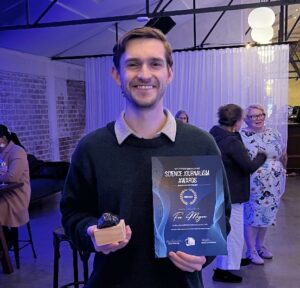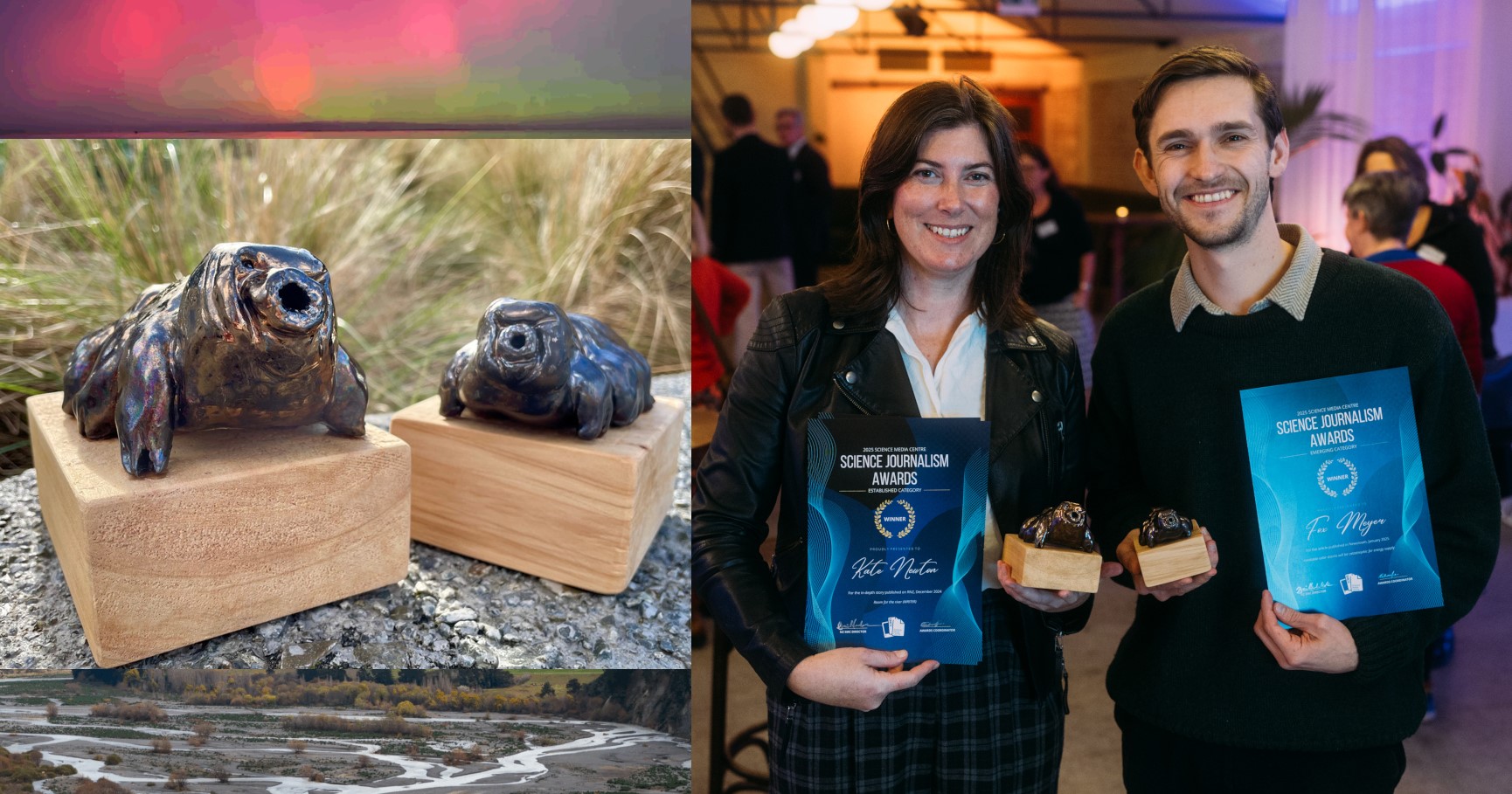The winners of this year’s Science Journalism Awards cover the dark side of solar storms and explore the impacts of putting rivers in a straitjacket.

Kate Newton of RNZ won this year’s Established Professional category for her In Depth article, “Room for the river,” with designer Hingyi Khong.
It looks at the artificial narrowing of the Ngaruroro River channel and its impact on groundwater levels, the braided river plain habitat, and flooding during Cyclone Gabrielle.
Judges found it “beautifully told, deeply relevant well beyond the immediate impact of extreme weather.”
Fox Meyer of Newsroom won the Emerging Journalist award for “Inevitable solar storms will be catastrophic for energy supply.”
The third-party nominator said, “Fox’s compelling article was a great invitation to look beyond the stunning auroras and to support mitigations in the face of potential widespread disruption.”
Judges were impressed by this under-reported angle on auroras, and commended the “excellent combination of complex information that clearly outlined why this matters.”
New Zealand Science Media Director Dacia Herbulock said the Science Journalism Awards are a unique new opportunity to celebrate the quality science journalism being done by reporters of all stripes in Aotearoa.

“It’s been an absolute pleasure to come back for a second year to read, watch, and listen to the 70 submissions for this year’s awards. The SMC and the judges had a real challenge whittling these entries down to the final winners.”
The awards were designed to cover effectively any topic involving science and its impacts on the communities it reaches.
“Even if a reporter doesn’t see themselves as a science journalist, there’s a good chance they have covered one or more of the subjects in the wide-ranging criteria for these awards,” Dacia said.
“We look forward to seeing your nominations when submissions open again next year!”
Thank you to the judges: virologist Professor Jemma Geoghegan, the latest winner of the Prime Minister’s Science Communication Prize; science writer and editor Veronika Meduna; and journalist and editor Alison Harley. And thank you to all those who took the time to nominate their favourite science journalism piece for the 2025 round.
Full profiles of this year’s finalists are available here.
 This year’s golden tardigrade trophies were designed and sculpted by Wellington-based artist Rebeka Whale, who said she enjoyed thinking about how moss would be like trees for the fascinating little creatures.
This year’s golden tardigrade trophies were designed and sculpted by Wellington-based artist Rebeka Whale, who said she enjoyed thinking about how moss would be like trees for the fascinating little creatures.
We were also delighted to host NIWA researchers last night, demonstrating their clever climate change game Future Coasts Aotearoa. Scott Stephens, chief scientist for coasts and estuaries at Niwa, invited awards night attendees to “experience the squeeze” of rising sea levels for themselves. You can try it out in your own web browser here.
